Yesterday evening, on 2 March 2020 around 23:38 UTC or on 3 March 2020 around 00:38 CET, a bright fireball occurred above Germany. The trajectory stretched over North-West Germany, close to the Dutch border.
There are already more than 160 IMO reports and several beautiful videos on the IMO event page. It was seen by spectators from Germany, the Netherlands, Belgium, England, and even France!
If you witnessed a fireball event and/or if you have a video or a photo of this event, please
Submit an Official Fireball Report
(available in 36 languages)
The trajectory which was computed based on the IMO reports indicates that the event happened above North Rhine-Westphalia, Germany:
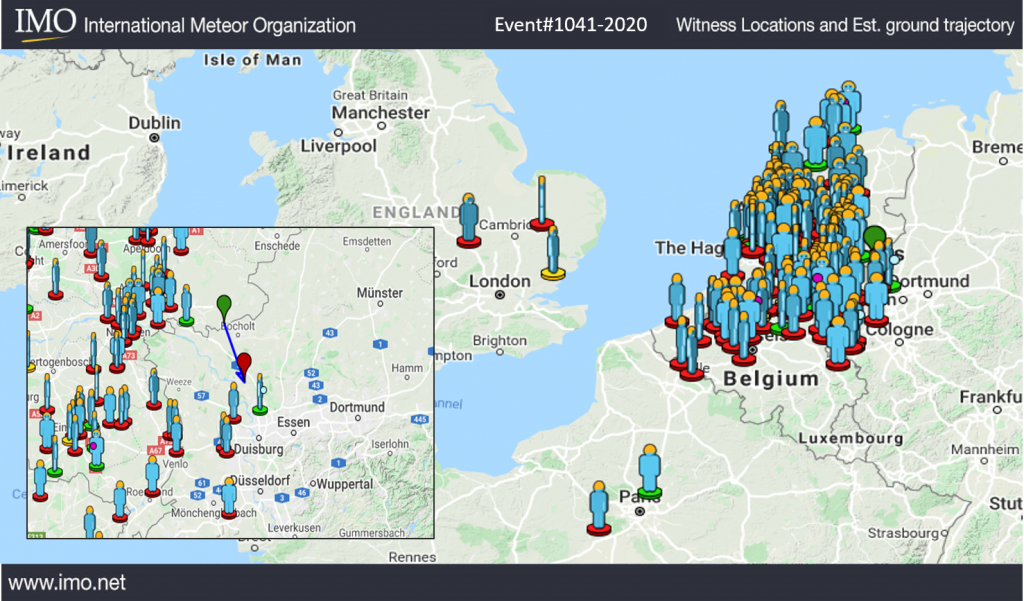
The fireball could even be measured by infrasound. The closest station of the International Monitoring System of the Comprehensive Nuclear-Test-Ban Treaty Organisation was about 600 km from the event and in its waveforms a signature of the fireball could be identified:
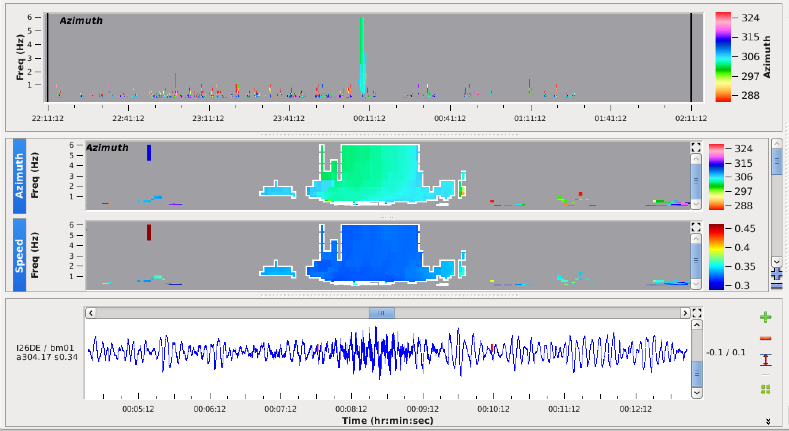
We were able to calculate a preliminary source energy of the entering asteroid of about 0.27 kt TNT. With an assumed velocity and density of 14 km/s and 3000 kg/m3, respectively, the size would be around 2 m diameter, with a mass of about 10 t!
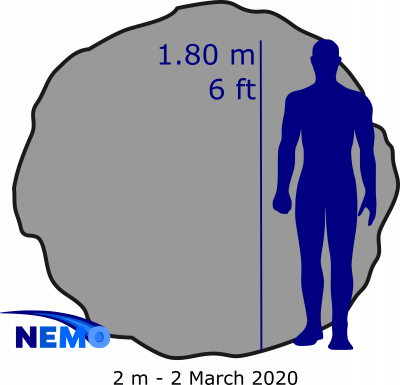
The fireball was also recorded by radar with 8 stations from the BRAMS network! These are all the BRAMS stations from East of Belgium or located in Limburg. The image below shows the spectrogram received at the BRAMS station in Oudsbergen, Belgium. The overdense bright meteor echo corresponding to the fireball is visible more or less in the middle of the spectrogram at 23:37:20 UT and lasts for more than 5 seconds.
It appears red in this power color-coded image. The power reflected from the ionized trail is very strong, even despite the distances to the transmitter and receiver.
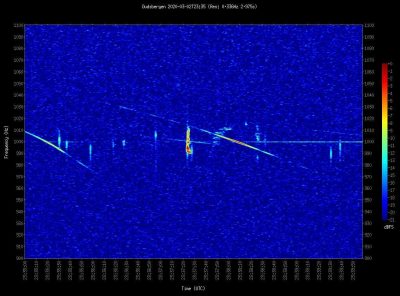
There are various nice images and videos of the fireball on Social Media e.g. Twitter:
Big #fireball last night! mooie #vuurbol gesnapt vanuit #Oostkapelle pic.twitter.com/RzEzfREUPL
— Klaas Jobse (@Doenker) March 3, 2020
The event was even recorded with one of the cameras of the FRIPON network. This network consists of all-sky cameras and catches fireballs over Europe during the night. The meteor could be identified in the data of the camera in Noordwijk, the Netherlands.
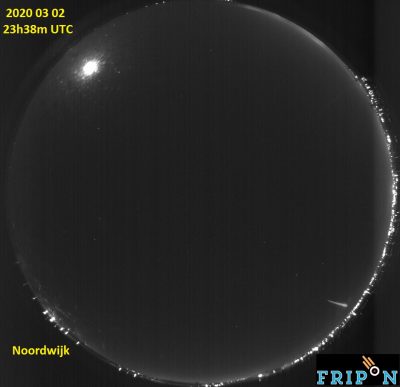
The stations of the Netherlands Seismic and Acoustic Network picked up the fireball as well! A signal of the fireball was received by ten stations of the network, the map shows the stations and the event’s location that could be estimated based on these detections. They are visible in the waveforms on the right hand side.
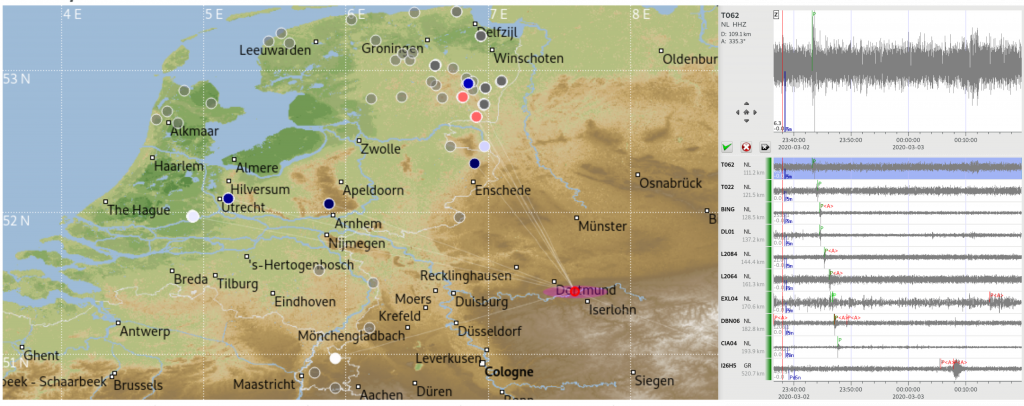
Update
Based on the data of four stations, Ermelo, Bussloo, Oostkapelle, and Oostduinkerke, Marco Langbroek calculated a preliminary trajectory of the fireball. Following his computations the meteor path lies entirely above German soil, at about 65 km from the Netherlands’ border, with its end point just west of Dortmund:
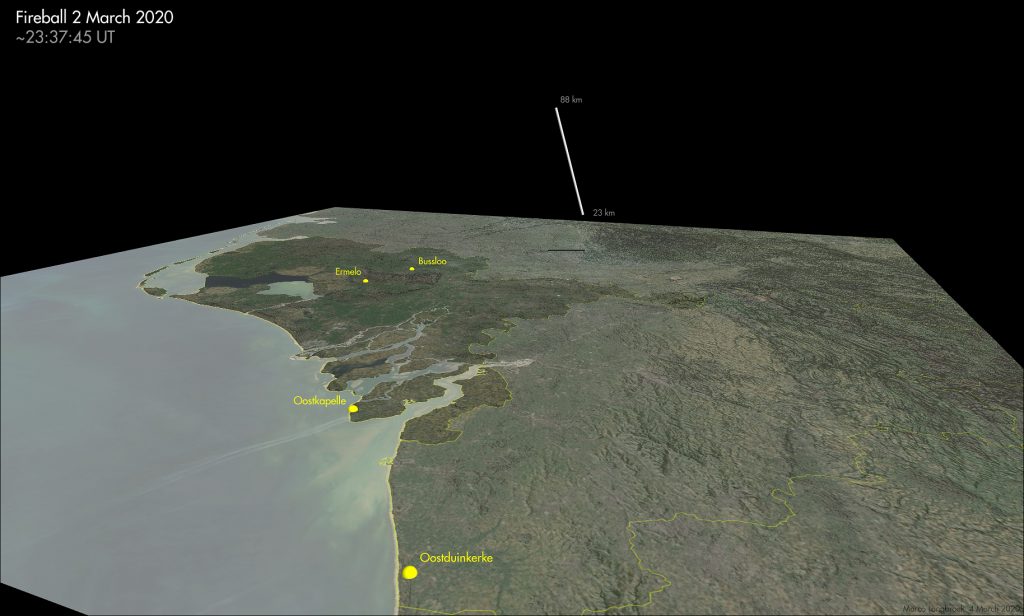
If you want to learn more about Fireballs: read our Fireball FAQ.
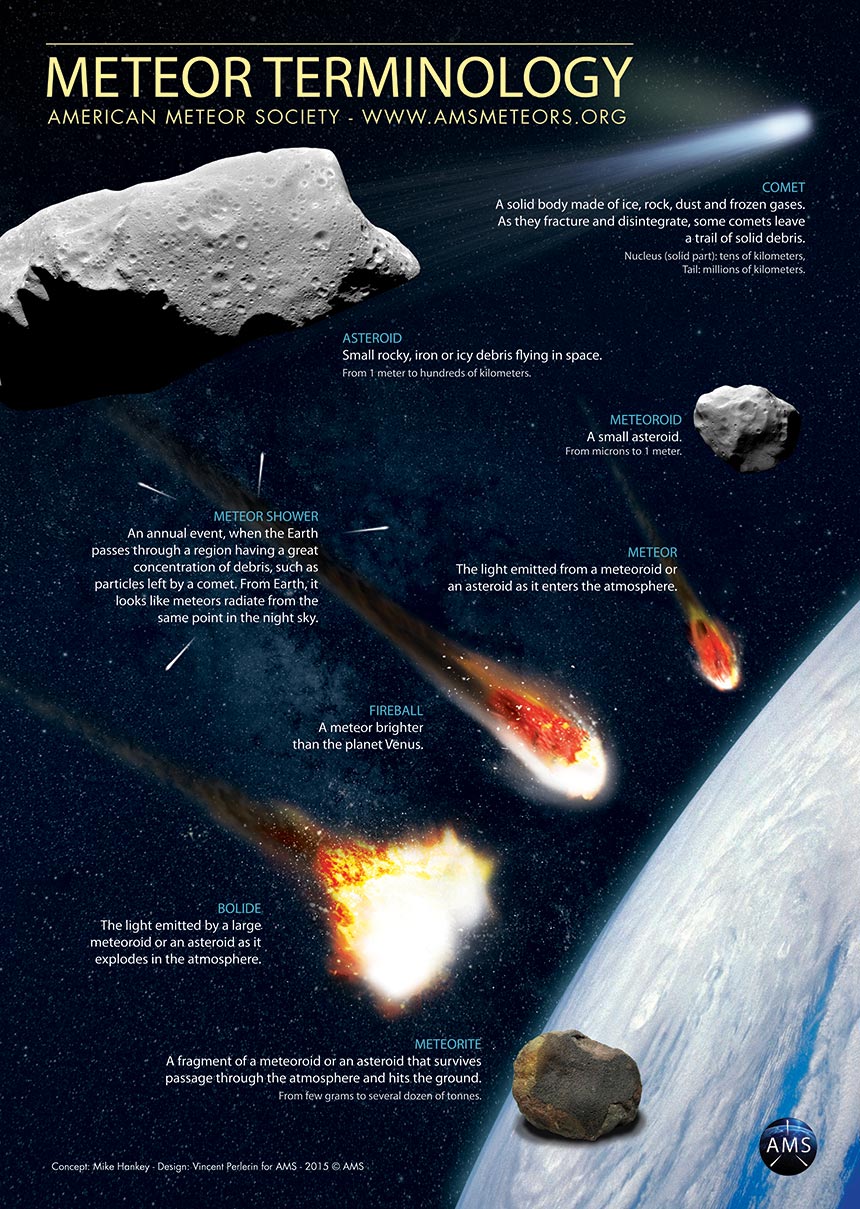



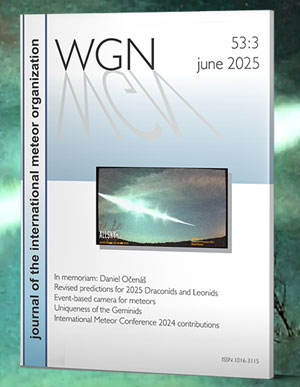
 You saw something bright and fast? Like a huge shooting star? Report it: it may be a fireball.
You saw something bright and fast? Like a huge shooting star? Report it: it may be a fireball.  You counted meteors last night? Share your results with us!
You counted meteors last night? Share your results with us!  You took a photo of a meteor or fireball? You have a screenshot of your cam? Share it with us!
You took a photo of a meteor or fireball? You have a screenshot of your cam? Share it with us!  You caught a meteor or fireball on video? Share your video with us!
You caught a meteor or fireball on video? Share your video with us!